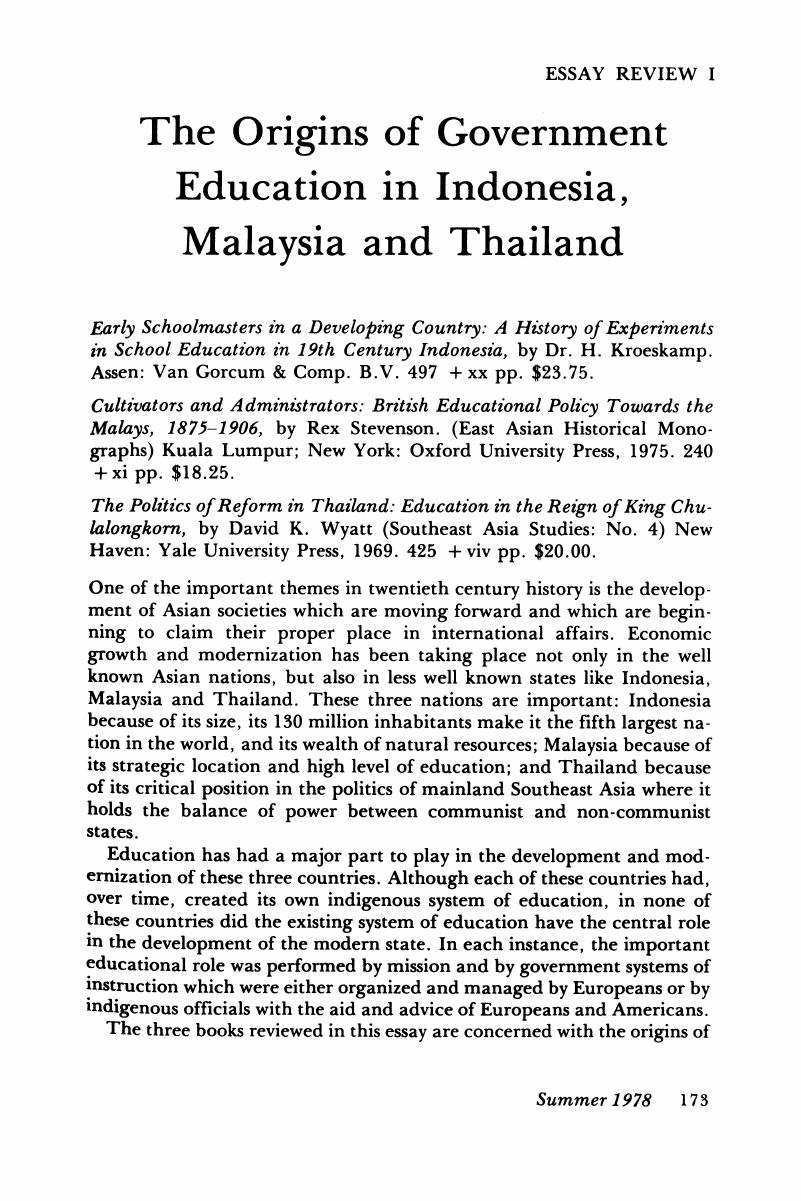No CrossRef data available.
Published online by Cambridge University Press: 24 February 2017

1. For information on American assistance to education in Indonesia see, Smith, Bruce Lannes, Indonesian-American Cooperation in Higher Education. (Institute of Research on Overseas Programs, East Lansing, Mich., 1960).Google Scholar
2. Readers with an interest in early modern education in Indonesia should also consult: Graves, Elizabeth E., The Ever-Victorious Buffalo: How the Minangkabau of Indonesia Solved Their “Colonial Question“ (Unpublished Ph.D. Thesis, University of Wisconsin, 1971. University Microfilms No. 71–25,723.); Abdullah, Taufik, Schools and Politics: The Kaum Muda Movement in West Sumatra (1927–1933), (Monograph Series. Cornell Modern Indonesia Project, Southeast Asia Program. Cornell University, Ithaca, New York, 1971); and McVey, Ruth T., “Taman Siswa and the Indonesian National Awakening,” in Indonesia. (Cornell) No. 4 (October 1967): 128–149.Google Scholar
3. Roff, William R., The Origins of Malay Nationalism, (New Haven and London, 1967), p. 76.Google Scholar
4. Many books and articles have been published in the past eight years which refer to the early history of Thailand. A person who is not familiar with Southeast Asia would find the following publications useful: Charnvit Kasetsiri, The Rise of Ayudhya: A History of Siam in the Fourteenth and Fifteenth Centuries, (East Asian Historical Monographs, Lumpur, Kuala and New York, 1976); Smith, George V., The Dutch in Seventeenth-Century Thailand (Center for Southeast Asian Studies, Special Report, No. 16, DeKalb, Illinois, 1977); Mabbett, I.W., “The ‘Indianization’ of Southeast Asia: Reflections on the Prehistoric Sources,” Journal of Southeast Asian Studies, Vol. 8, no. 1 (March 1977): 1–14; and Solheim, Wilhelm G. II, “Reflections on the New Data of Southeast Asian Prehistory: Austronesian Origin and Consequence,” Asian Perspectives, Vol. 18, (1976): 146–160.Google Scholar